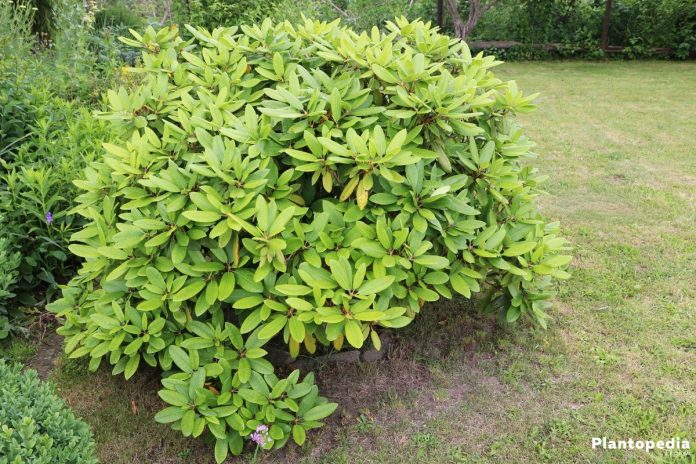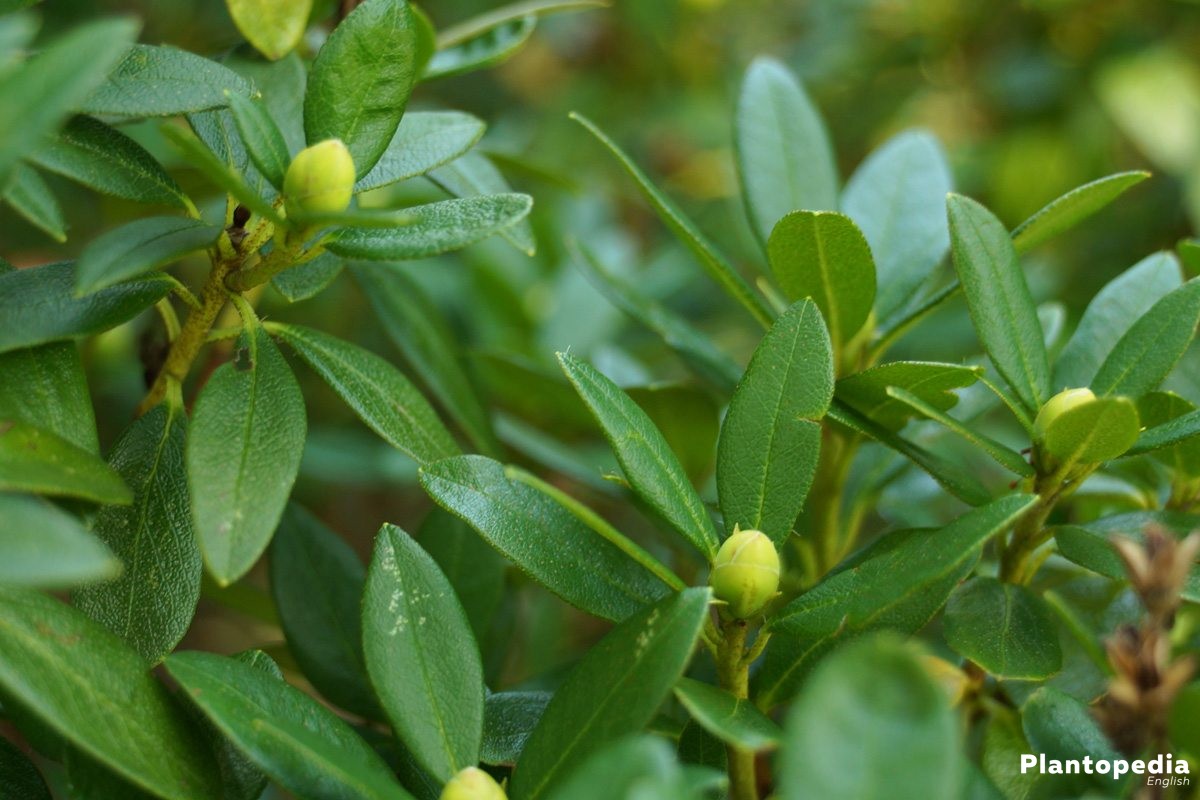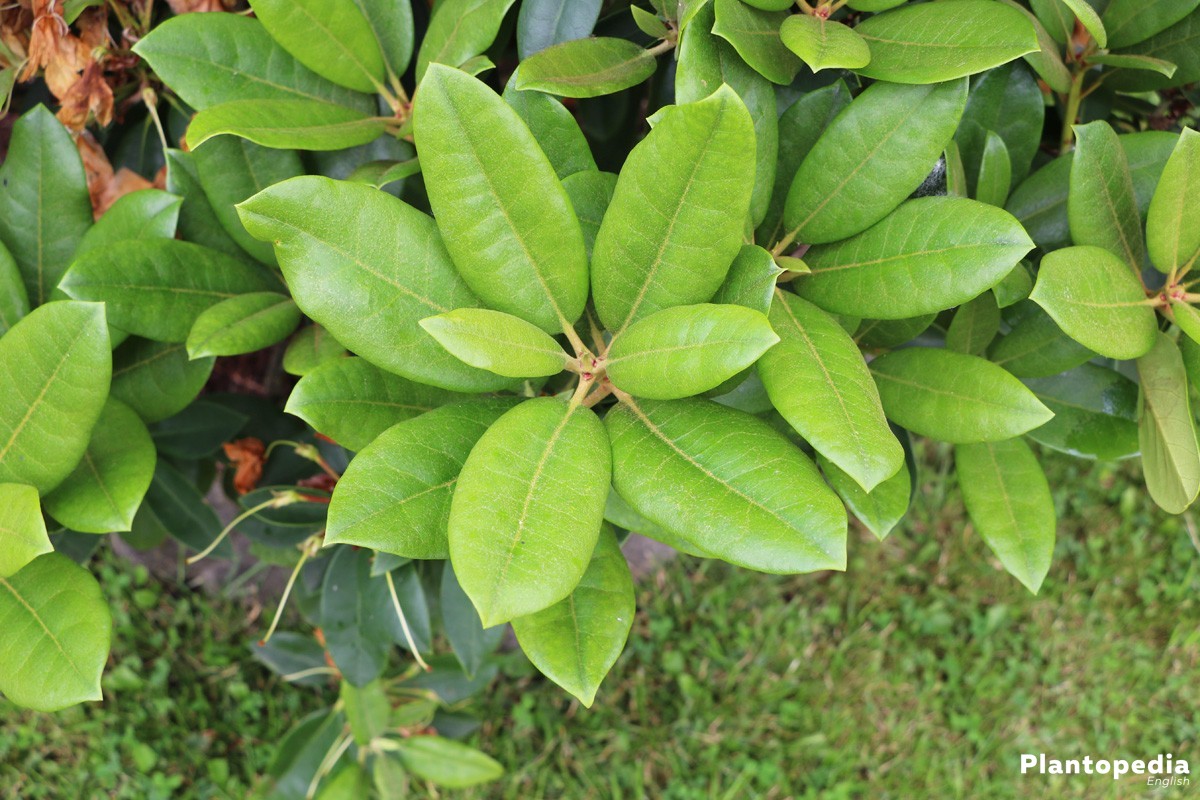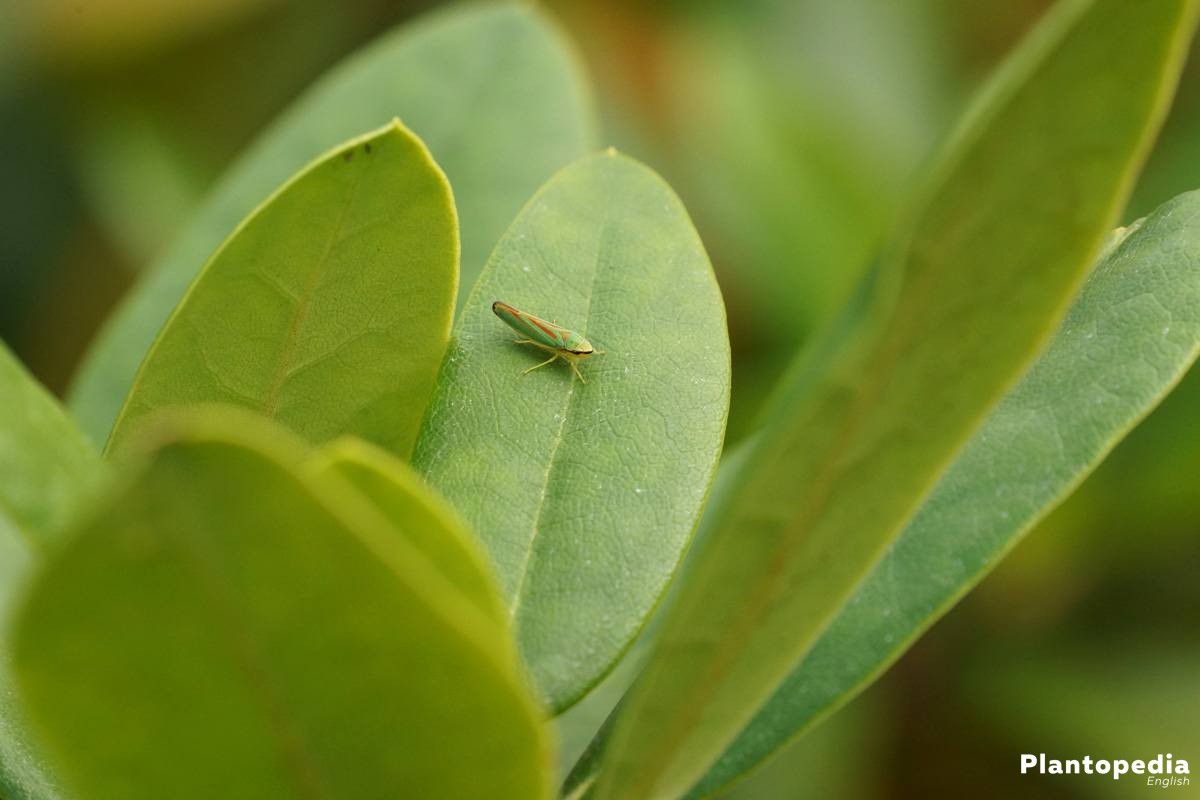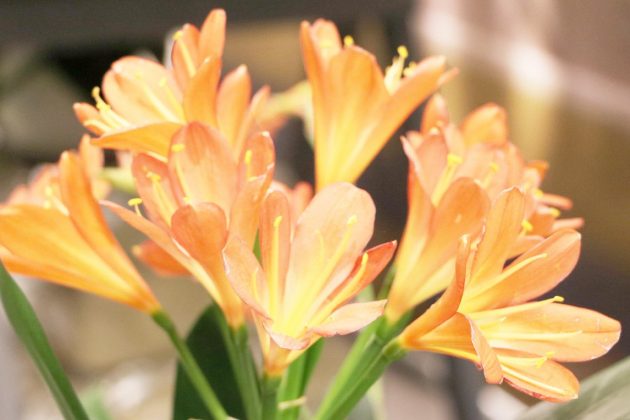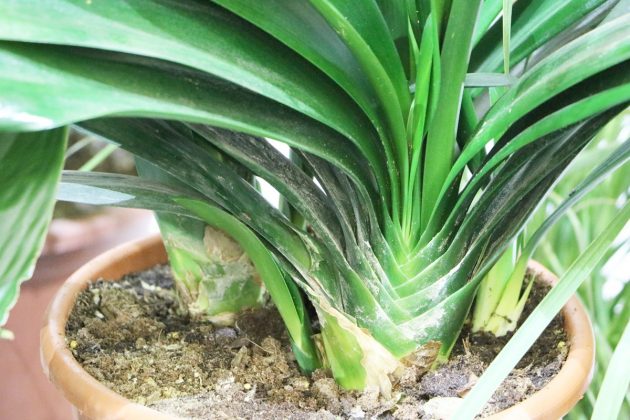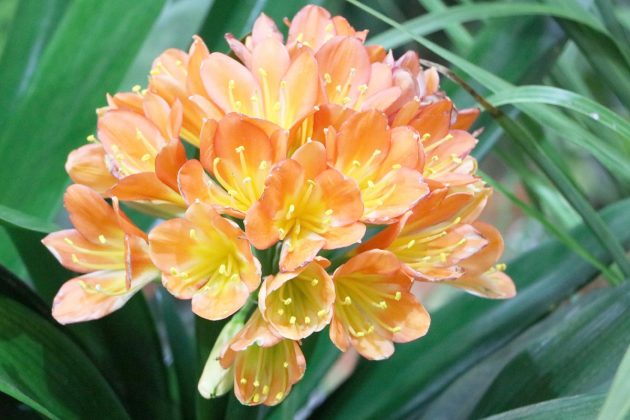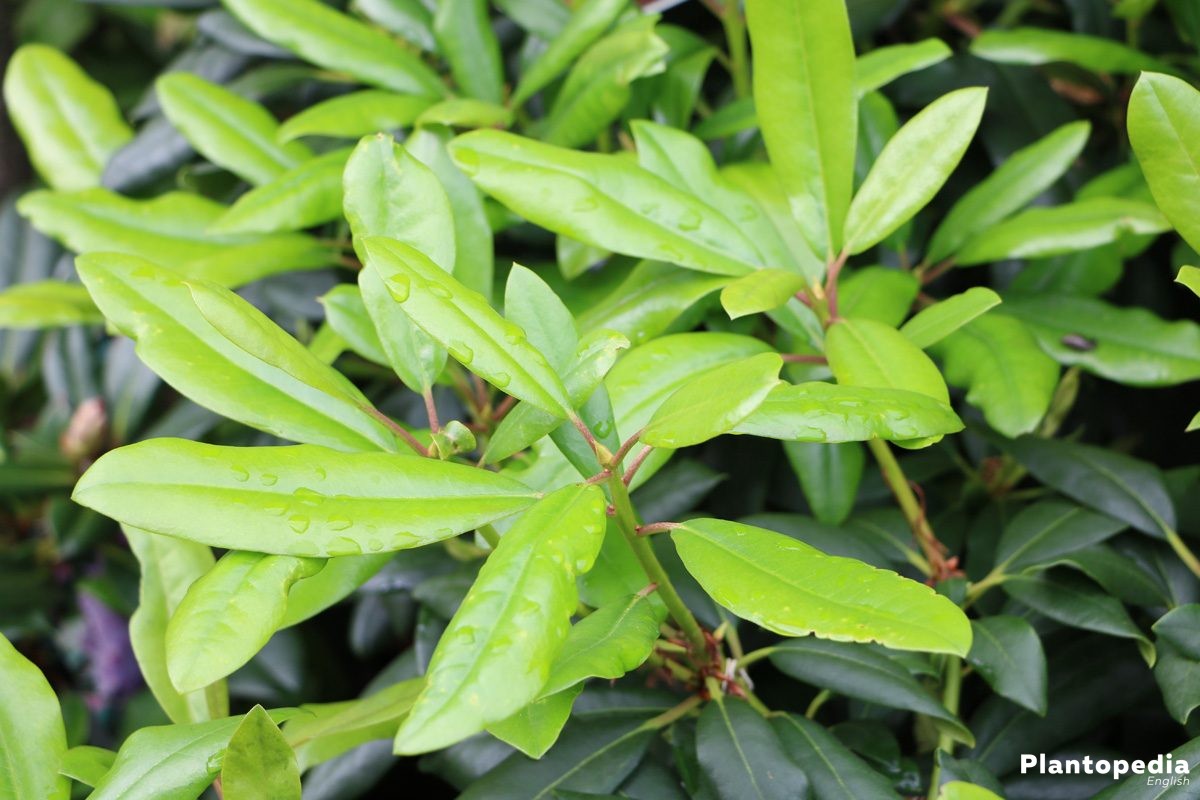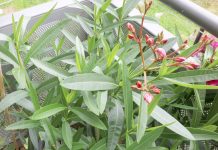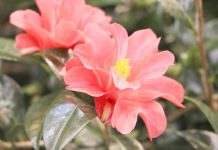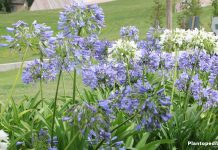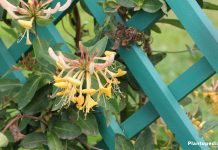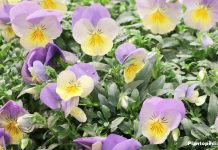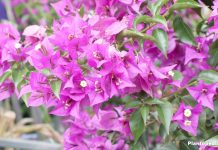The big evergreen shrub is covered with lavish blossoms which shine in the most different colors. No wonder the Rhododendron enjoys a great popularity in this country. The ravishing flower grows bell like blossoms, which are arrayed on an umbel grape inflorescence. The Rhododendron is, however, high maintenance posing a multitude of challenges to a hobby gardener. This care instruction will let you know, hot the rhododendron flourishes best.
Plant Profile
Contents
- Plant family: (Ericaceae)
- Species: Rhododendron
- Trivial name: Rose tree, alpine rose
- Origin: East Asia
- Growth height: 1,5 to 4 meter
- big radial arrayed, mostly evergreen leafs
- flowering period from April or May until June
- several blossom colors, depending on the variety, for instance red, blue, white, rose or purple
- poisonous
The Rhododendron is one of the most popular growths in domestic gardens and parks. His name is derived from Greek and loosely translates to Rose tree. It derives from the lavish look of the blossoms of the decorative bush.
As the rhododendron is a comparatively sensitive plant, it requires a lot of attention and proper care in order to grow to its impressive growth and the beautiful blossoms, for which it is known for. Abide by this care instruction to properly cultivate this attractive plant.
The species rich rhododendron is home nearly all over the world. It grows in the tundra as well as mountainous regions and more moderate areas with a tropical climate. Even in the alpine one can encounter wild growing rhododendron varieties.
That is why the looks of the plant species range from flat dwarf shrubs to trees which are several meters high. The typical, big, bushy woods, which are preferably planted in central European gardens and parks, have their origin mostly in Asia. Its natural habitat are leaf and mixed forests.
Care
The effort regarding the care of the Rhododendron is worth it: The high maintenance plant thanks you for the proper care with a lavish growth and a multitude of blossoms.
Substrate
The Rhododendron requires a loose, permeable substrate which is acidic. The pH value should lie between 4,5 and 6. The soil should furthermore be nutrient rich and lime free. In order to fulfill all of these requirements, you can mix regular potting soil with withered foliage or lime free white peat. You should choose a relation of 1:1, but you can easily use a somewhat higher amount of peat to mix it into the potting soil.
Location
The rhododendron requires light, but too much. The intensive midday sun is not being tolerated by the bush as it dries out severely quick. It grows less blossoms if it is not exposed to enough light. That is why a half shady location or loose shadow is ideal, for instance in the periphery of trees.
As the grows grow flat to the sides and are partially very fine, they do not tolerate dominant root neighbors. They should thus be planted with a sufficient amount of distance to other plants.
The rhododendron is compatible with:
- other rhododendron varieties
- ground cover
- woods like the with hazel or the plant dogwood
The leafs like nectar and pollen are poisonous for human and animal. That is why the rhododendron should not be planted at a location, which is accessible to children. Pets should be kept away from the plant as well.
Planting
The ideal planting time for the rhododendron lies in the spring between the middle of March and the middle of May. Alternatively, the plants can be be placed into the ground between September and the middle of November. This is also recommended in warmer regions.
If frost occurs, before the rhododendron has properly rooted, there is an increased danger of winter damages. In order to plant the rhododendron, dig up a hole which is big enough for the root bale. If the available soil can not meet the requirements of the plants (see section “Substrate”).
Proceed as follows:
- dig up a deeper but only slightly deeper hole, as the root grow flat below the surface but only slightly into the ground
- fill it up with a mixture of lime free peat and potting soil
- with clay rich grounds, you should install a layer of drainage between the filled up substrate and the ground. Suitable for this is for instance gravel
- a pit filled with this mixture which is approximately four times as wide as the root bale offers to the rhododendron several years of ideal growing conditions
- completely immerse the root bale in water, e.g. in a bucket, doing this, all air will leak
- when, after about two to five minutes no bubbles will rise up, you can take the rhododendron out
This is how you plant the bush:
- put the root bale into the pit, so that it finishes with the ground, it should not lie deeper
- fill up the hole with substrate
- carefully tread down on the transition period between the root bale and the soil
- put water on the rhododendron without flooding the ground
- fertilize the rhododendrons planted in spring with a two week delay, if planted in autumn, they should be fertilized for the first time in spring
To keep the ground moist, you can cover it after planting with bark mulch or pines. The layer should be one to three centimeters thick. The mulch does not only take care of a pleasant ground climate, but also prevents the growth of weed. This would be, under a big rhododendron bush, hard to remove.
Cutting
A regular back cut is not necessary concerning the rhododendron.
A plant should be cut:
- to shorten a bush grown too big
- to bring into form a rhododendron hedge
- in the event of disease or infestation
- with growths growing bare
The rhododendron should be cut directly after the flowering, as it grows its buds for the next year soon after the death of the blossom. A timely cut prevents a blossom less subsequent year. One should keep in mind in this event though, that hedges, bushes and growths should be radically cut between March and September. The Federal Act for the Protection of Nature wants to protect breeding spots with this regulation.
This signifies for the hobby gardener the following:
- gentle form and maintenance cuts are permitted in adherence to Article 39 section 5 sentence 1 number 2 of the federal act for the protection of nature, if no breeding birds are being disturbed by it
- a radical cut is possible until the end of February and from the first f October
- whoever wants to rejuvenate his plants so that is gains new strength and drives out thicker in the next year, has to sacrifice one year of blossoms
Strongly cut back rhododendrons sometimes require up to five years, before they can grow new buds. You should additionally check before a strong cut, if the bush has strong roots in the ground. Otherwise it can occur, that the rhododendron does not drive out again.
For a cut of the rhododendron, the usage of rose shears is appropriate, with it one should cut the selected branches oblique towards the base. In order to encourage the growth of buds, one can additionally cut withered inflorescence in a regular manner.
Watering
Rhododendrons have primarily got to be regularly supplied with water, as they have strong needs and prefer an equally moist soil. Soft rain water is the most suited to be used for watering. If you want to use tap water, you should insure first, that it does not contain much lime.
You should adhere to the following when watering:
- if possible, water the plants near the ground in order not to damage the blossoms
- water logging damages the rhododendron
- only continue watering the rhododendron, when the substrate has slightly dried on the surface, in the case of soils rich in clay, one should install a drainage layer before planting
- longer dry periods have got to be avoided, overt dryness can be indicated on the leafs, they roll up and subsequently dry out, if this is the case, the rhododendron urgently needs water
- in order to prevent damages from frost, the bushes are not being watered from the start of late autumn
Fertilizing
The right fertilizer strengthens the intensive flowering of the rhododendron. The sensible plant does not tolerate lime however, which is why no fertilizer with this ingredient should be utilized.
Rhododendrons are being fertilized in front of the blossoms in March or April and have requirements dependent on its age. If the root area is protected with bark mulch, it has to be carried off before the fertilizing process, otherwise only a small part of the nutrient is reaching the plant.
- one should add a long time or special fertilizer for rhododendrons when handling young plants
- spread approximately 50 grams per square meter on the earth
- older plants, which have grown properly and are at least 70 cm high are being ideally supplied with nutrients with storage fertilizer
- spread about 90 gram of fertilizer in the outer third of the crown
- Perennial rhododendrons, which are higher than 120 cm, require 120 gram of storage fertilizer
Complementary to the ordinary fertilizer, you should use horn shavings once a year in spring. The shavings are being drawn from hoofs and horns of cattle and supply the plant with natural fertilizer and nitrogen. This is especially important, if you utilize mulch, as it often leads to a lack of nitrogen.
Yellow leafs are oftentimes indicating, that the plant does not contain a sufficient amount of nitrogen. Spread the horn shavings on the earth below the mulch and softly work it inside with a rake.
Use the following amounts:
- with young plants: 30 gram horn shavings per square meters
- with all older plants: 50 to 60 gram horn shavings per square meters
All of these instructions are valid for the most popular varieties with big foliage. Whoever plants dwarf rhododendrons or varieties with small leafs, halves the fertilizing amounts. You will notice that you have sufficiently fertilized on the growth: The leafs should grow thick and show in a strong, dark green hue.
Additionally, the rhododendron should grow a big amount of blossoms. If this is not the case, you can fertilize again until the end if June. Independent of the age of the plant, you can add 30 grams of an organic fertilizer or a special rhododendron fertilizer on the earth.
Hibernation
To shelter the leafs of the evergreen, winter hardy plants of strong winds and the winter sun, you can cover the rhododendron with a fleece or net.
Diseases
Plants that have not properly been taken care of are susceptible to diseases and parasites. A proper care is preventing an infestation most effectively.
Bud rotting and rhododendron cicada
The bud rotting is a disease, which is being triggered by the rhododendron cicada. The parasite infests the plant in late summer. It lies its eggs in the flower buds, by cutting it open. By doing this, the cicada often transfers a fungus on the plant. The damages resulting out of this are known as bud rotting.
The eggs of the rhododendron cicada hibernate inside the buds; the larvae hatch in April. They settle on the lower sides of the leafs and are sucking out the plant juice. By these symptoms it is being indicated, that the rhododendron is affected.
- the colorful patterned insects are approximately eight millimeters big and can bed spotted with the bare eye, they sit on the leafs
- the buds are getting and later black
To prevent root rotting from occuring, the cicadas have to be regularly removed. This is ideally being down with an adhesive trap, which has a sticky surface. This is being hung on a branch of the plant, where it attracts insects.
They are remain stuck on it and die. Infested buds have to be immediately cut, as the fungus otherwise spreads. Dispose of the buds in the bio degradable trash and under no circumstances on the compost, as the fungus will nest on it.
Common weevil
If the leafs of the rhododendron are chewed on the edges, the plant might be infested by the common weevil. The larvae of the parasite also eat the roots, which can result in the death of the rhododendron. They can be effectively killed with thread worms, which can be bought in a specialist store.
The grown bugs can be removed with the help of clay pots, which are being placed inside out on the earth. As the insects are active by night, they retreat to a dark spot during the day. The gardener can simply lift the pot by day and remove the common weevil.
Varieties
There are around 100 species of the rhododendrons known, which contain about 30000 varieties, which are partially pure and partially hybrid. The species, which belong to the group “big flowered rhododendrons” are being used as a garden plant in these areas. These are big leafed hybrids, which are being cultivated out of several wild species.
They differentiate above all in the color of the blossom. The rhododendron impeditum is blooming blue, the rhododendron “Cunninghams White” white and the variety “outwork evening sun” red.

